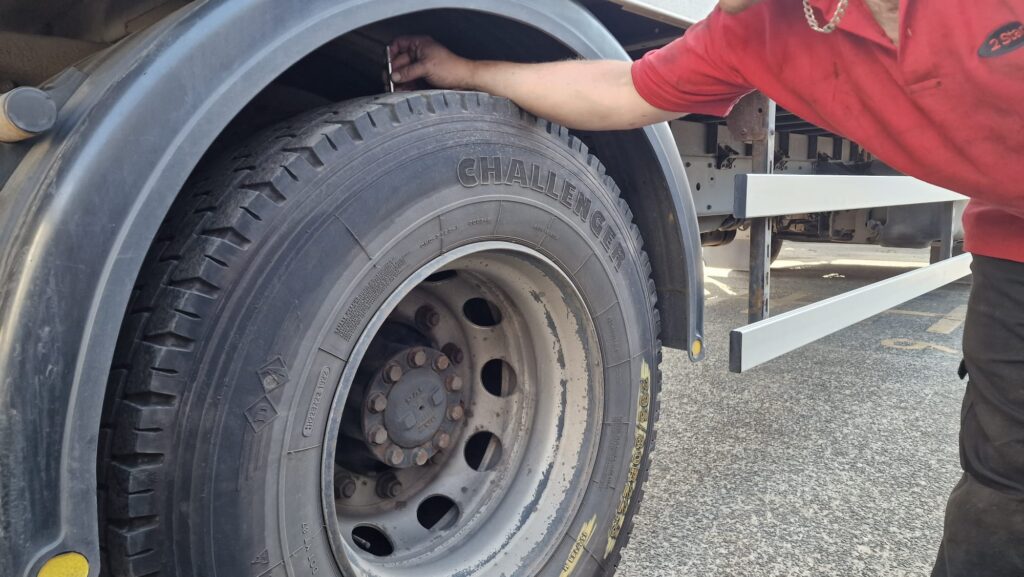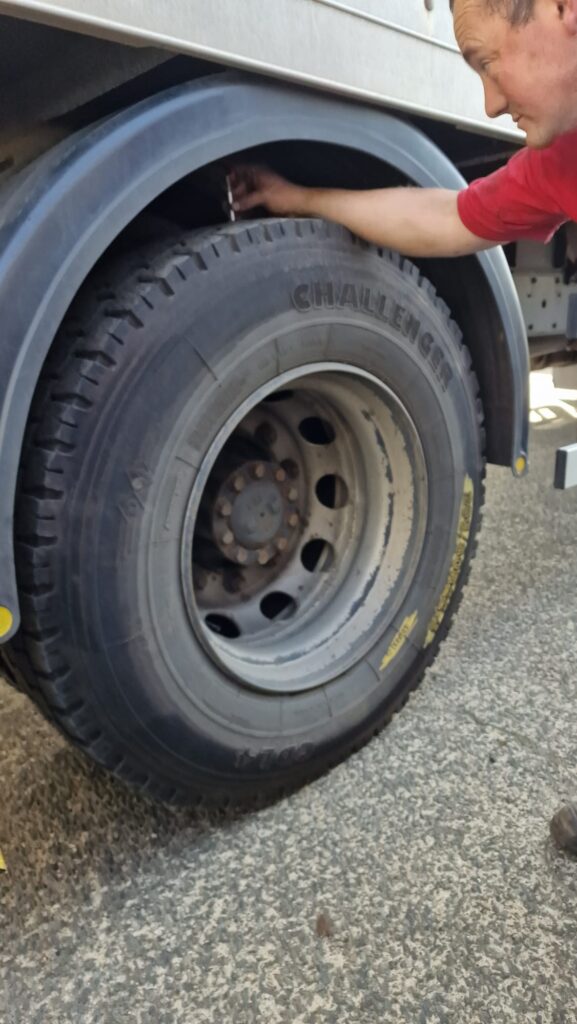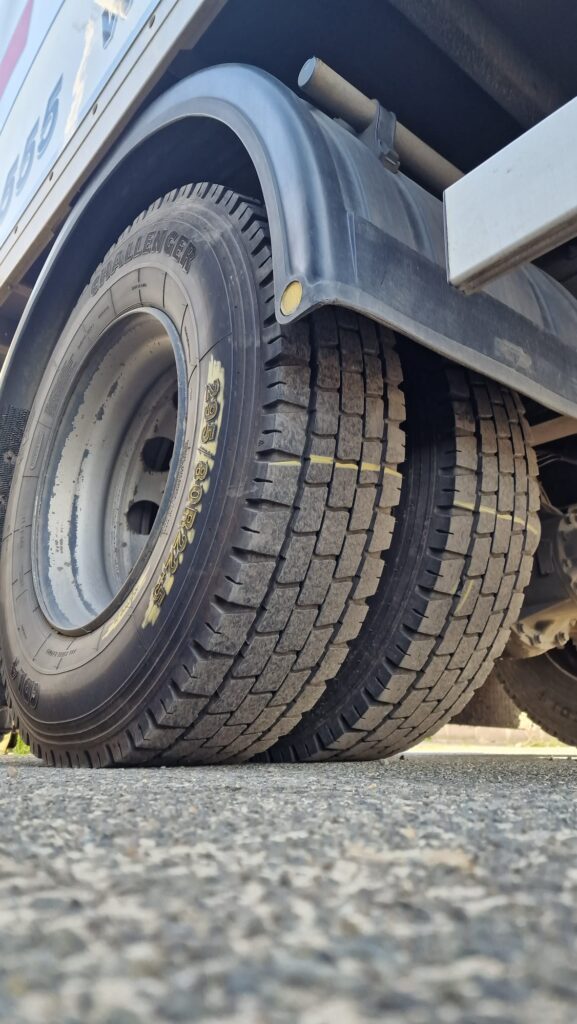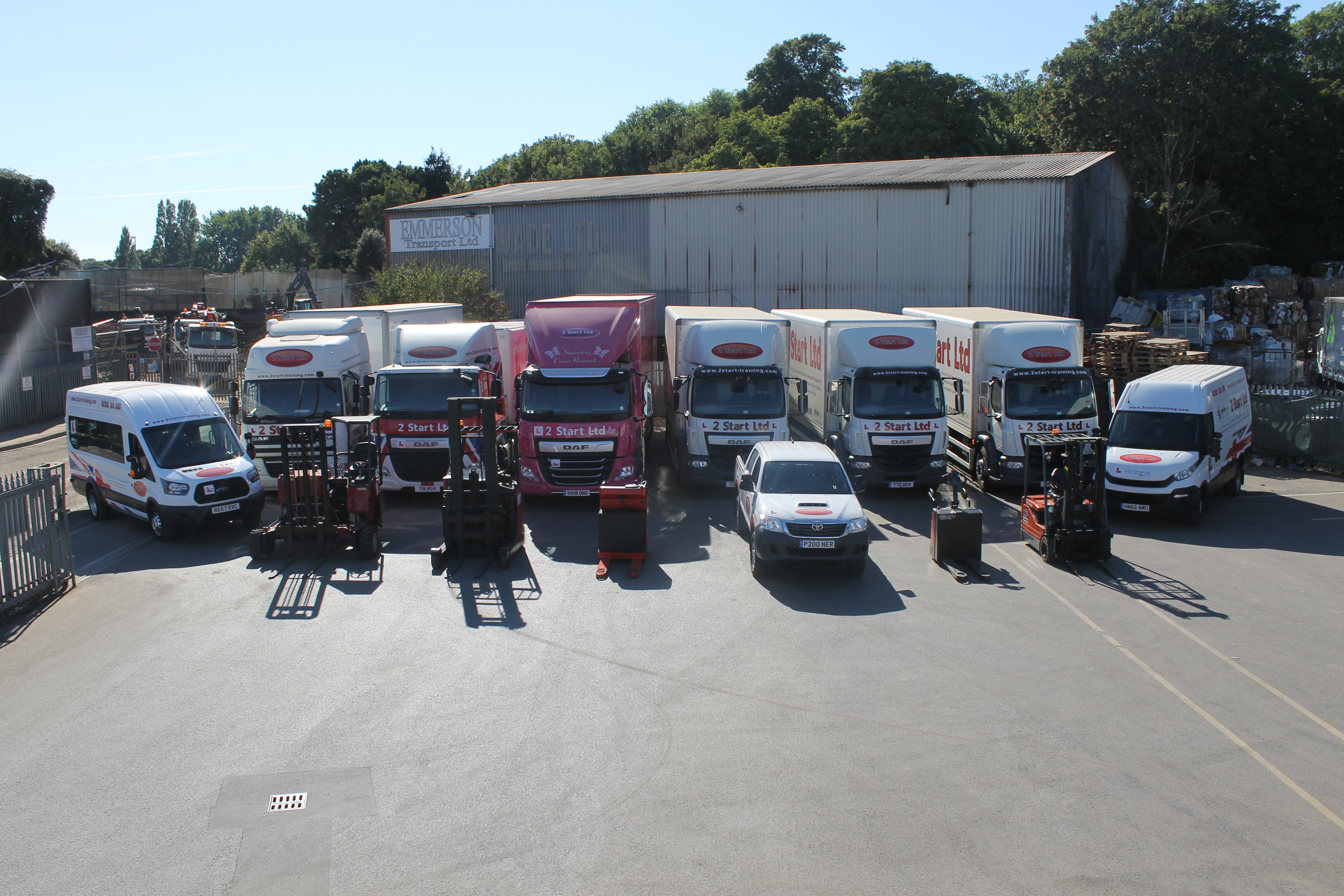According to the Transport and environment statistics 2022 distributed by the GOV website, the number of lorry miles compared to the percentage of greenhouse gas emission was considerably disproportioned. HGVs (heavy goods vehicles) made up 6% of all vehicle miles, with the greenhouse gas emissions from HGVs making up 19%.
It could be argued that many factors come into play. Not only apparent to the long-distance driving HGVs do, but also the heavy loads they may carry can be detrimental to the percentages given. From the age, mechanical condition and quality of the vehicle, all can play a big part in the emissions produced.
All HGVs must be in optimal condition to aid in reducing emissions. This is as well as increasing longevity of the vehicle. This is why at 2 Start, it is vital for all our students to understand the principles of vehicle checks, one crucial element being the checking of tyres. Each tyres condition; tread; and air pressure are three key factors. But this doesn’t consider a checklist of what to check.
Cited from Trucks Stuff: Ten Tips For Truck Drivers To Improve Fuel Efficiency, “The average long distance HGV driver does around 125,000 miles a year which equates to 2,500 miles a week.”
Looking at another statistic from the Government website, Road Freight Statistics July 2021, approximately 17.5 billion lorry miles were completed in 2021, an 8% increase from the previous year.
Let’s do the maths!
This works out to approximately 14,000 HGVs on the road in 2021.
An extensive number of HGVs on the road, which will only increase due to the uninterrupted rise and demand for HGV drivers.
It may make you question if all these vehicles are being checked thoroughly to ensure vehicle tyre safety and efficiency?
Efficiency is key when picking the desired tyres needed, as it can help you save money in the long run.
Here’s an example
The average cost of diesel per litre is 162.35 pence.
WebFleet discuss how “…the average Heavy Commercial Vehicle (HGV) with a payload of 26 tonnes would achieve a fuel consumption of 30 litres every 62 miles.”
They also further this explanation, reiterating how an HGV ”… can expect to achieve annual mileage of 74,500 per year, with an annual fuel expenditure of over £36,400.”
This subsequently works out to approximately £3,000 per month, and approximately £758 a week.
This represents approximately 40% of the total cost of the vehicle.
These costs are most definitely gut wrenching to think about. Especially taking into consideration that there are several factors which can save fuel costs. These include driving quality, vehicle gross weight & distribution, and safe loads along with tyre quality and pressures.
The first two points may not be the easiest to change, due to different types of behaviours and not being able to change carry weights.
However, regularly ensuring the vehicles tyre pressures and condition are both good will aid in cutting fuel costs and potentially help in lowering the emissions produced as well as the engine will not be working as hard to move the vehicle.

Did you know that all tyres come with a tyre label. This echoes the grading for the following: wet grip; fuel efficiency and external noise.
Fuel Efficiency
Did you know that tyres are responsible for approximately 20% of a vehicle’s fuel consumption?
This is due to rolling resistance. This can be reduced when choosing a higher rating tyre which benefits fuel efficiency. This also can subsequently reduce the number of emissions produced.
Wet Grip
Also known as “wet braking.” This is indicating to the purchaser how a tyre would perform in different weather conditions. In this instance, it would refer to rainy conditions. The patterns in tyres are not only designed to aid in grip and friction. Although, they also assist with water dispersal.
National Tyres And Auto Care mention how if a vehicle is fitted with a tyre class of A, compared to E, the distance difference is over 10 metres.
External Noise
Measured in decibels (dB) this may not be a necessity when choosing a tyre. If you spend a lot of time on motorways, it may be more significant to have a lower dB rated set of tyres on the vehicle.

47% of all miles completed in HGVs in 2021 were on the motorway, seeing an increase of 7.8%.
Introduced in 2012, Goodyear explain how these labels “…provides consumers across Europe with essential information on fuel efficiency, safety and noise by detailing the tyres’ rolling resistance, wet grip, and external rolling noise.”
This label was then revised in 2021, to include the “…icon indicating if a tyre is suitable for severe snow conditions and another new icon for grip on ice.”
The RAC distributed an article explaining Tyre Labels, which stipulates that “The EU tyre label is a simple and effective way to compare the performance of tyres and help decide which are the best for your needs.”
This goes for HGVs as well, as you can purchase the correct tyre to suit your logistical needs.
For example, if you are going to be carrying various heavy loads over a long period of time, it may be in your best interest to purchase tyres with a higher fuel efficiency rating. This will help reduce the fuel consumption of your vehicle and the vehicles emitted greenhouse gases.
Furthering this, you may encounter multiple driving conditions. Ensuring that you have a good wet grip rating can also aid in various rainy conditions.
However, even as a training provider like 2 Start that is not going to be carrying goods all the time, our mileage is still high. More fuel-efficient tyres are known to benefit us and help towards reducing our fuel cost over the year.
Nevertheless, the information given on a tyre label can help you compare all available tyres on the market. So you can choose the tyre for your needs and capabilities.
How can tyres effect the HGV?
This isn’t necessarily in relation to the vehicle itself. The emissions it can produce is also a big factor. The Road Freight Statistics of July 2021 reveal how 107.5 million tonnes of Carbon Dioxide was emitted in the transport sector, with HGVs accounting for “…one fifth of all domestic transport emissions in 2020.”
Although other factors come into play when ensuring all HGV tyres are at a high standard. For example, monitoring tyre pressure. Ensuring your tyres are at an optimum pressure can reduce rolling resistance. This is as well as extending the tyre’s life.
Furthering this point, TyrePressures.com have extended their viewpoint regarding the topic of Tyre Pressures. Explaining:
Here at 2 Start we provide a selection of logistics training courses. Our Driver CPC courses cover vehicle walk-around checks and tyre safety checks before even considering starting the engine.
8 Top Tips to Ensure You Are Not Caught Out
Ensure your tyres are at the correct pressure.
Incorrect tyre pressure can cause uneven tread on your tyre. You should always check your tyre pressure at least once a month, or before any long distance driving you will be completing.
Keep a consistent but sensible driving style
Erratic driving or constantly driving at top speeds can cause tyre damage and rapid air loss.
Don’t overload your vehicle
This can cause your tyres to overheat. Also, your tyres wear down faster. Further increasing the risk of an incident occurring.
Check the condition of your tyres
This could be looking for any bulges, cracks or splits in the tyre, exposing cord or ply.
Make sure your tyres are at the correct tread depth
Remember, 1mm across ¾ of the width around the whole circumference of the tyre is the legal limit for an HGV.
Make sure your tyres are in date
There is a ban on the use of tyres over 10 years. You can check the date of manufacture of your tyre by looking at the side.
Always Carry a spare
Although you may be as prepared as can be, sometimes debris can catch you out and you may have to replace your tyre. Always ensure you are carrying a spare tyre, so you are prepared in these situations.
If in doubt, get your tyres checked professionally
Many garages do free tyre checks! (pending if you need to replace any tyres).











